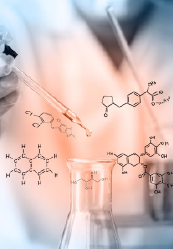Europe Textile Chemicals Market: A Volatile Organic Compound to Avert Wrinkling of Clothes
Organic textiles can involve substances such as flax, wool, cotton, silk, hemp, and bamboo, and synthetic textiles involve substances such as nylon, acrylic, spandex, rayon, and polyester. In the Europe textile chemicals market, Chemical enamel applied to textiles can profoundly enhance advent, abrasion resistance, usefulness, and a plethora of function chemical enamel presumptions.
Chemicals Used in Textiles
- Formaldehyde is a volatile organic compound (VOC), indicating that it can be liberated in the atmosphere. It is principally utilized in fabrics to avert wrinkling, but it can also be utilized for waterproofing and to assist color deterrence. In massive amounts, formaldehyde can lead to respiratory issues and skin irritation. It may lead to complications of asthma or allergic exposure dermatitis. Therefore, there are restrictions to the quantity of formaldehyde permitted in consumer commodities.
- Azo Dyes: These are detected in 60-80% of all colorants and are accountable for the realistic colors that can be observed in several textiles, particularly clothing. Azo dyes can entirely effortlessly part with fabrics and can splinter to discharge chemicals known as aromatic amines, some of which have been expressed to lead to cancer. Some dyes can lead to contact dermatitis, the most customary of which is disperse blue 106 and disperse blue 124.
The Market Insights
As per the recent analysis by Polaris Market Research, the Europe textile chemicals industry size and share was valued at USD 3.45 billion in 2023 and is predicted to reach USD 5.11 billion by 2032. Also, the study states that the market reveals a robust 4.5% Compound Annual Growth Rate (CAGR) over the predicted timeframe, 2024-2032.
Benefits of Using Chemicals in the Textile Industry
Chemicals are becoming increasingly common in the manufacture of textiles for many reasons. These chemicals provide specific advantages. They render the manufacturing procedure simpler to handle and offer commodities with a chosen operation or a particular prudent advent. In the Europe textile chemicals market, these textiles might be greenhouse substances that reflect the sun, flame-resistant furniture cloth, durable car airbags, color-synchronized bath towels, resilient sweaters, or workwear resistant to moisture and soot.
Delving into the Dynamics of the Europe Textile Chemicals Market Size and Share to Uncover Key Insights, Request for a Sample Research Report
Growth Drivers
The advancement of inventive and viable chemicals sanctioned manufacturers to make superior fabrics with enhanced attributes such as wrinkle-proof, stain-proof-proof, and UV safeguarding. Also, the usage of nanotechnology and biotechnology has caused the fabrication of specific textile chemicals that offer improved performance and usefulness to fabrics, such as water repugnance, porousness, and anti-microbial attributes.
Geographical Reach
Germany: This country gripped the commanding revenue share in the Europe textile chemicals market because of its robust and entrenched textile industry, which is one of the biggest in Europe. This offers a notable domestic market for textile chemicals, pushing the demand for commodities such as finishers, colorants, and auxiliaries. For instance, as per the World Trade Organization’s 2022 World Trade Statistical Revenue Report, the biggest dealer of clothing and textiles worldwide is the European Union. As of 2021, the clothing and textile imports manufactured by the EU are considered for 34.1% of the worldwide market value. Germany was the apex importer among all European nations.
To Conclude
Textiles for clothes are also frequently veneered with chemicals, for instance, to coagulate them and render them wrinkle-free. In the Europe textile chemicals market, chemicals in their nanoforms are assisting in rendering their textiles more waterproof, wrinkle-free, stain-free, and bacteria and mold-free.


